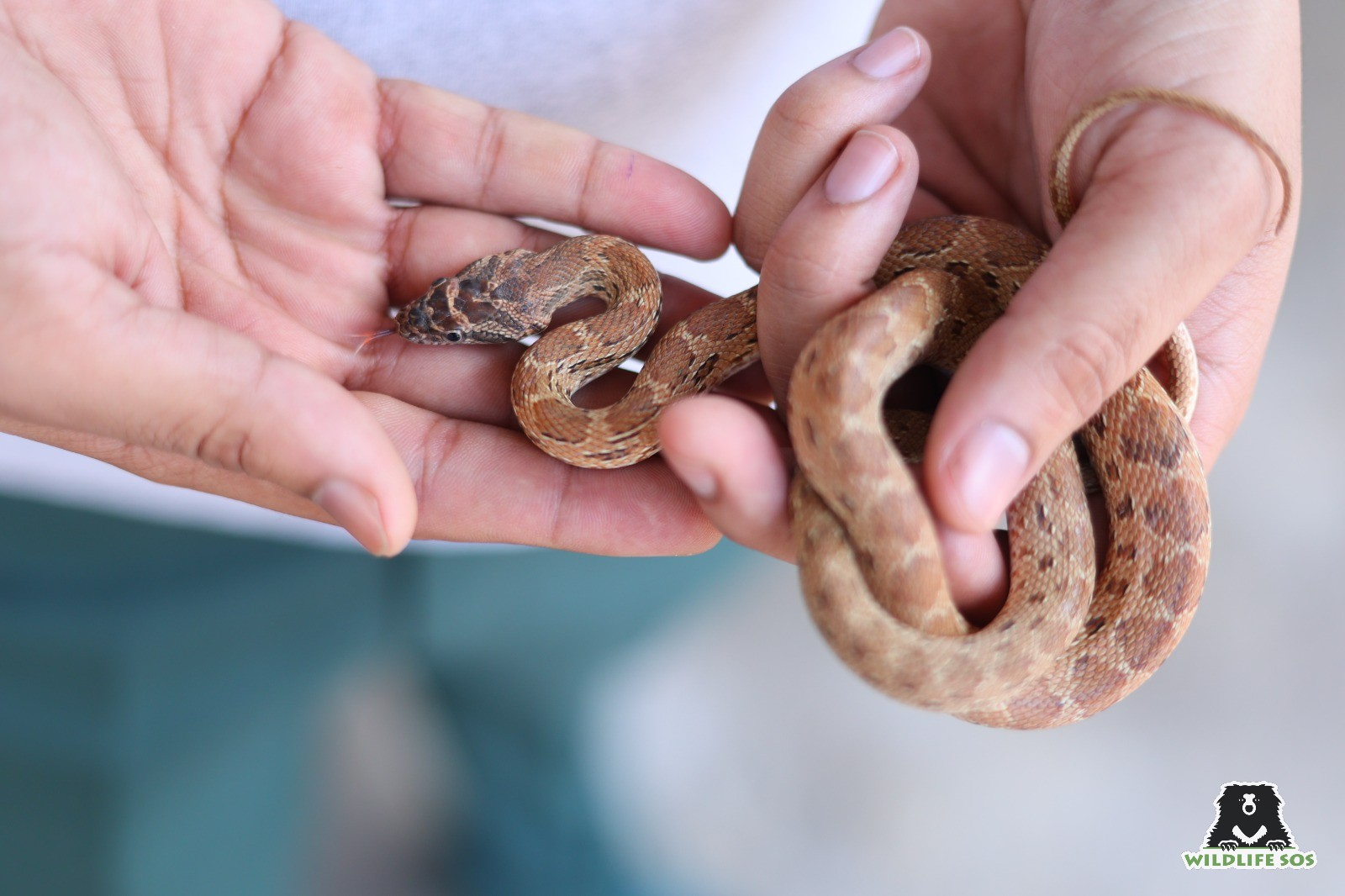
SAVED: A black-headed royal snake rescue by Wildlife SOS
In the aftermath of devastating floods and incessant rains that struck Delhi recently, residents of the city have been encountering snakes in large numbers. Among these are deadly species like cobras and kraits.
“The increase in snake sightings in Delhi after the recent floods has been significant,” Kartick Satyanarayan, the CEO and co-founder of Wildlife SOS, told Patriot.
Wildlife SOS is a prominent wildlife conservation and rescue organisation.
“During the flood period, Wildlife SOS received around 300 calls in five days, a stark contrast to the two to three calls per day during other times of the year,” Satyanarayan revealed.
He explained that this surge in snake sightings can be attributed to the snakes seeking refuge on higher ground after their burrows got flooded.
Moreover, the floods disturbed or fragmented their natural habitats, compelling them to venture into human-inhabited spaces.
To address the growing concern over snake encounters, Wildlife SOS established a Rapid Response Unit in collaboration with the forest department. This specialised team operates a 24×7 emergency helpline and responds promptly to calls from concerned citizens, police control room units, and the Delhi Fire Services.
Satyanarayan explains, “The primary objective of our Rapid Response Unit is conflict mitigation, ensuring safety for both the snakes and the citizens.”
Rescues and challenges
“Equipped with necessary gear, our skilled rescuers and trained handlers carried out several daring rescue operations in treacherous conditions during the floods. Our operations included rescuing snakes from floodwaters, treetops, rooftops, and basements,” Satyanarayan told Patriot.
“Since the onset of the floods, Wildlife SOS has successfully rescued around 70 snakes from various flood-ravaged areas of Delhi,” Satyanarayan proudly states, highlighting the organisation’s efforts in the face of adversity.
“However, this commendable feat comes with challenges,” he adds, acknowledging the risks and difficulties the team encounters during such daring rescue operations.
“Handling venomous species like spectacled cobras and common kraits during floods poses additional risks,” said Satyanarayan, adding that the team exercises extreme caution during such rescues, wearing anti-bite gloves and carrying necessary equipment and gear to ensure the safety of both the reptiles and the rescuers.
Among the snakes rescued during the flood crisis, the Wildlife SOS team encountered a variety of species.
“Indian rat snake, spectacled cobra, black-headed royal snake, Indian rock python, red sand boa, and checkered keelback are the most commonly rescued species,” he revealed.
“Rescues predominantly occur in locations near forest patches or areas abundant with greenery, such as Chhattarpur, Alipur, Sainik Farms, Sanjay Van, and areas near Qutub Minar,” Satyanarayan further explained.
These locations, he said, encompass both residential areas and farmhouses, making them hotspots for rescue operations.
“The snakes often seek refuge in these areas as they provide a semblance of their natural habitats amid the urban landscape,” he said.
Spreading awareness in flood-prone areas
Apart from the rescue operations, Wildlife SOS is actively involved in educating the public about appropriate actions during snake encounters.
“We raise awareness about identifying venomous and non-venomous snakes,” says Satyanarayan.
The organisation emphasises that out of all the snake species found in Delhi, only the Indian cobra and common krait are venomous.
Citizens are advised not to panic as snakes usually attack only when threatened or provoked. Instead, they are encouraged to seek professional help and never attempt to handle snakes with bare hands.
“To ensure the safety of both snakes and residents during flooding, Wildlife SOS is primarily focused on public education in the affected areas,” Satyanarayan emphasises.
He continues, “We conduct workshops in schools, colleges, and communities to spread awareness about urban-wildlife and the importance of reporting snake incidents to experts via the dedicated helpline number (+91 9871963535) introduced by the forest department.”
Satyanarayan highlights that proactive public education is crucial in minimising risks and promoting coexistence with wildlife in Delhi, especially during flood-prone periods.
In the future, Wildlife SOS aims to minimise snake-human encounters during flood-prone periods through proactive public education.
“We discourage people from attempting rescue work and encourage them to reach out to experts,” he points out.
The organisation believes that a well-informed public can play a crucial role in minimising risks and coexisting with wildlife.
“As the floods subside, we remain dedicated to handling snake sightings effectively through collaborative efforts with the forest department,” he assures, illustrating Wildlife SOS’s continued commitment to creating a safer environment for both humans and wildlife in Delhi.
“With workshops, rescue operations, and dedicated teams, Wildlife SOS is determined to preserve the delicate balance between urban living and the natural habitats of the city’s diverse wildlife, including its slithery residents,” Satyanarayan concludes, highlighting the organisation’s ongoing efforts towards harmonious coexistence in the city.
Police bust illegal e-cigarette racket in southeast Delhi, seize 749 units and arrest one man
Delhi HC asks animal welfare board to submit a fresh report on alleged illegal pedigree…
Delhi Traffic Police says FIRs for wrong-side driving will be limited to serious or repeat…
Delhi HC asks authorities to frame an action plan to prevent fire and other accidents…
A life-term murder convict, absconding for 25 years after jumping parole, was traced and arrested…
A Delhi court ordered the release of four accused in the 2020 Northeast Delhi riots…